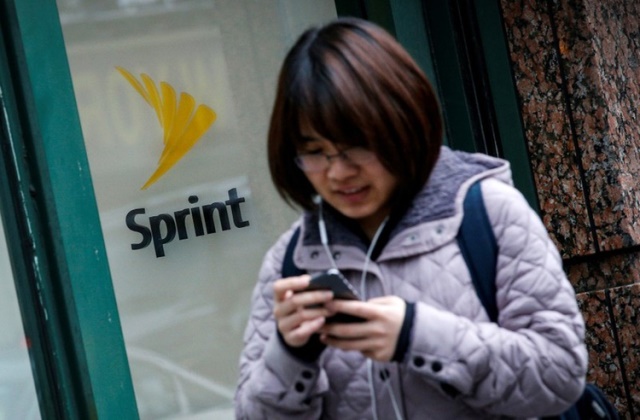Sprint CEO Michel Combes has revealed the telecom operator’s main achievements during the June quarter of 2019.
 Sprint, a part of SoftBank of Japan, has lost 175,000 mobile phone customers. This includes loss of 128,000 post-paid phone connections. Sprint’s total mobile phone subscriber base reached 54.312 million in June 2019 as compared with 54.487 million in March quarter.
Sprint, a part of SoftBank of Japan, has lost 175,000 mobile phone customers. This includes loss of 128,000 post-paid phone connections. Sprint’s total mobile phone subscriber base reached 54.312 million in June 2019 as compared with 54.487 million in March quarter.
On the other hand, Verizon, AT&T and T-Mobile added mobile phone subscribers during the June quarter.
Verizon, the largest U.S. mobile carrier, added 245,000 mobile phone subscribers during the second quarter.
AT&T, the second-largest U.S. wireless carrier by subscribers, added 72,000 phone subscribers.
T-Mobile, the third largest mobile operator, has added 710,000 phone subscribers in the three months ended June 30.
Sprint’s post-paid churn was 1.74 percent in June quarter of 2019 as against 1.81 percent in March quarter. The pre-paid mobile phone users’ churn of Sprint was 4.23 percent in June quarter of 2019 as against 4.37 percent in March quarter.
Sprint’s connected devices (M2M) reached 13.421 million in June quarter of 2019 as against 13.505 million in March quarter of 2019.
Sprint’s post-paid ARPU declined to $42.57 from $43.25. Sprint’s pre-paid ARPU dropped to $32.15 from $33.67.
Sprint reported revenue of $5.3 billion (–3 percent), EBITDA of $3 billion, operating income of $455 million and net loss of $111 million.
Sprint said the strategy was on growing revenue per customer account by selling additional devices and value-added services, including promoting its feature-rich Unlimited Plus and Unlimited Premium rate plans.
This strategy delivered year-over-year growth in post-paid service revenue and post-paid net additions of 134,000, driven by growth in data devices and partially offset by post-paid phone customer losses.
Sprint Capex
Sprint’s network investments, or capital expenditures, of $1.189 billion grew marginally from $1.149 billion in March 2019 and $1.132 billion in June 2018 as the company made progress on executing its network plan under the guidance of chief technology officer John Saw.
Sprint’s engineers have nearly doubled the number of Massive MIMO radios on-air during the quarter reaching about 3,000 units deployed. Massive MIMO improves network capacity and is at the foundation of Sprint’s True Mobile 5G network.
The company is using 64T64R (64 transmitters 64 receivers) Massive MIMO radios that support a feature called split-mode, which enables Sprint to simultaneously deliver LTE and 5G New Radio (NR) service.
Sprint’s True Mobile 5G is available in select areas of cities such as Atlanta, Chicago, Dallas-Fort Worth, Houston and Kansas City.
The company aims to launch 5G service in Los Angeles, New York City, Phoenix and Washington D.C. in the coming weeks.
Sprint’s mobile 5G network will cover approximately 2,100 square miles and 11 million people, giving Sprint the largest initial 5G coverage footprint in the U.S. — once all nine metro areas are launched.
Verizon on Wednesday announced that it’s expanding its 5G coverage to more locations, adding Atlanta, Detroit, Indianapolis and Washington. Verizon 5G is already available in Chicago, Denver, Minneapolis, Providence, Rhode Island and St. Paul, Minnesota.
Verizon 5G will be available in more than 30 cities, including Dallas, Boston, San Diego and Phoenix, later in the year.
